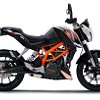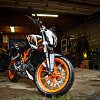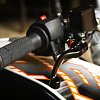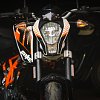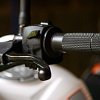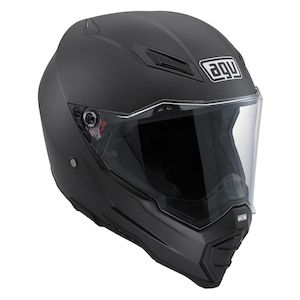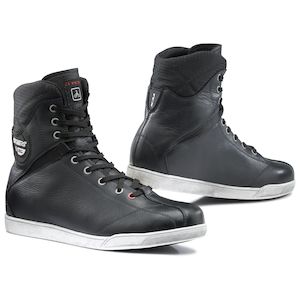Ice cream. It always comes back to my love of ice cream. More specifically, in this case, a creamery located about 75 miles outside of Philadelphia. I am referring to my original location recommendation for the KTM 390 Duke shoot.
Here’s my rationale: As a new rider, you look for any excuse to log miles on your motorcycle. For me, an ice cream shop provides an excellent catalyst for a 150-mile round trip, a perfect way to kill a Saturday morning. While I am sure there are plenty of advanced riders out there eyeing up the 390 as a toy to play with, my goal was to examine the bike through the lens of a new rider.
The bike
After much rumor and speculation, KTM introduced its pint-sized Duke to the United States in 2015. While the KTM 390 Duke is new to the U.S. market this year, it is a bike that has been for sale overseas for two years. I’d like to believe this means that most of the “new model bugs” have already been worked out on foreign markets.

The 390 Duke comes across as a thought-out, competent motorcycle, a stand-alone piece from its bigger siblings. It takes aim at riders who may be new to riding, but not to the idea of performance.
Performance starts with the class-leading power coming from the 373 cc single-cylinder powerplant. Below 7,000 rpm, power is relatively docile, perfectly suited for new riders. From there, power climbs quickly and steadily to the redline, just past the 10,000 mark, providing riders with 25 foot-pounds of claimed torque at 7,250 rpm and 43 ponies at 9,500 rpm to tame as their skills develop.
The Duke is brought to a halt via ByBre brakes manufactured by Brembo. The front wheel is fitted with a radial-mounted four-piston caliper clamping down on a 300 mm rotor while the rear wheel has a single piston digging into a 230 mm disc. ABS is standard and can be disabled via a hidden button on the dash. What this means for new riders is superior stopping power compared to other bikes in the beginner class of motorcycles.
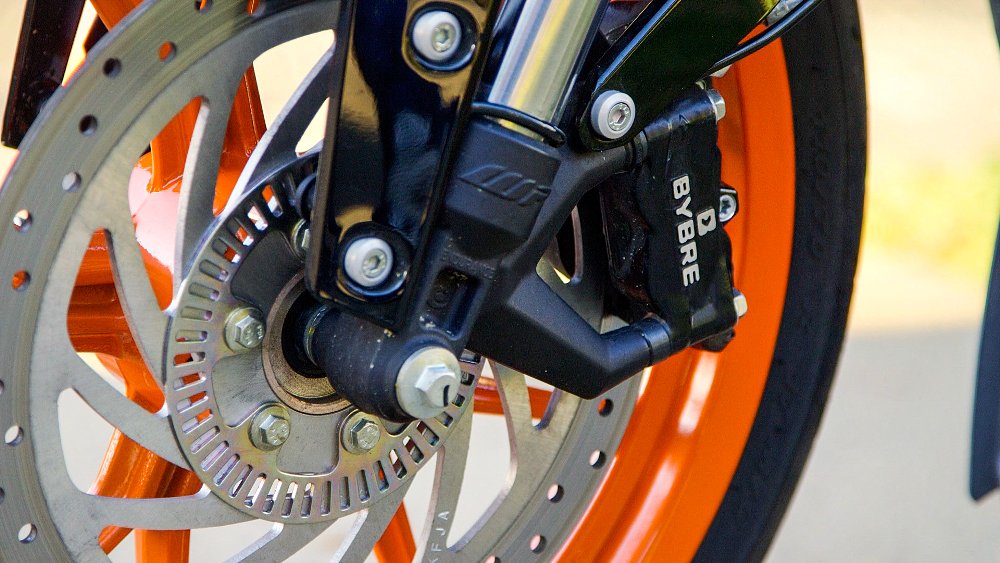
Suspension is provided by WP, utilizing a true sport bike-sized 43 mm telescopic fork upfront and 10 positions of preload adjustability out of the rear monoshock. The lightweight trellis frame adds looks and also functionality. KTM claims that the frame is designed not just to cut weight, but also to improve handling by centralizing the weight. KTM provides a dry weight of 306 pounds for the small Duke, which puts it around 340 pounds with fluids. I found the combination of suspension and low wet weight, coupled with a 31.5-inch seat height, to make the 390 an extremely approachable machine.
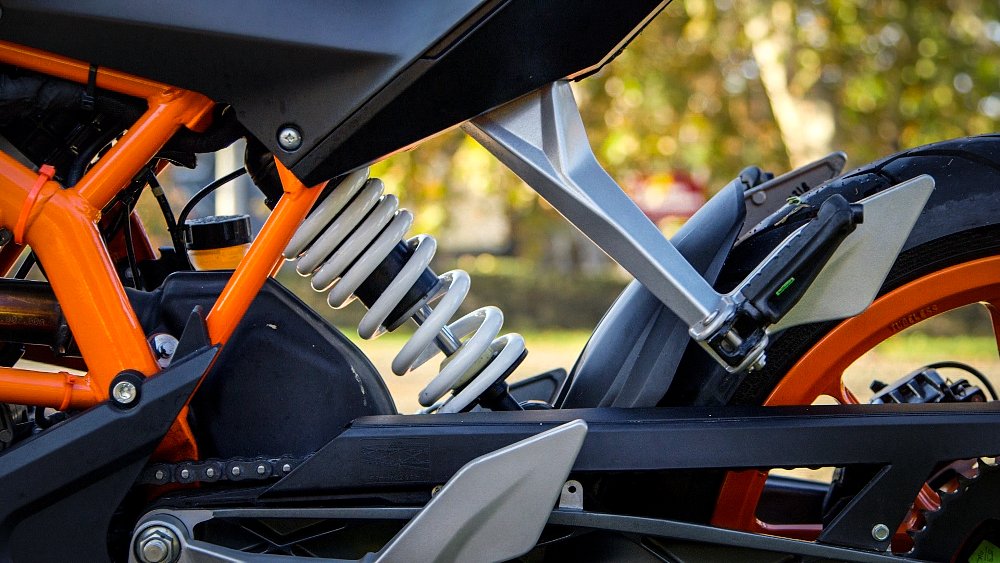
While weight and suspension play a solid role in the Duke’s nimble handling, so do the tires. Our KTM was shipped with Pirelli Diablo Rosso II tires, a real sport bike tire. Wearing a 110/70-17 up front and a 150/60-17 in the rear, they provide good grip and help to instill confidence in deep lean angles. It is nice to see KTM using real sporty rubber on an entry-level bike.
While the dash provided a slew of information, including fuel range, engine temperature, tach, speedo, and gear indicator, it was hard to read. I found the dash display to be distracting and I can only imagine the frustration this could cause new riders as they are trying to focus on learning how to ride. But I am getting a bit ahead of myself. Let’s talk about where I rode this little guy.

Testing the Duke
During my 10 days with the 390 Duke, I logged more than 700 miles of varied riding in real-world scenarios where new riders could be expected to venture if they were to buy the Duke as their first bike.

I commuted to work every day, using a combination of freeways and city roads. I hit up diners for breakfast on the weekend, met friends at coffee shops for lunch, hit ice cream shops in the country, and visited my parents’ house, which is about a 175-mile round trip. I even traveled up to Lemmy Mountain to join Lemmy and Mrs. Lemmy for “Taco Tuesday” at their local corner bar.
While the 390 Duke handled all these scenarios, it was especially comfortable blasting around town and down winding back roads. It will travel comfortably on the highway around 70 to 75 mph. However, after an hour or so, the wooden plank of a seat will have you begging for a place to pull over and stretch your legs.
In the city landscape of Philadelphia, the KTM’s power felt bigger than it was. The lack of mass made it feel like I was blasting around alleyways and side streets on a mountain bike, as opposed to a motorcycle. My only gripe was the lack of storage for commuting. I hate using a backpack, so I would want to install some sort of tail pack, as the plastic gas tank rendered my magnetic tank bag useless.
KTM 390 Duke highlights
What impressed me most about the 390 Duke was how much fun I had on a bike that, for all intents and purposes, is a beginner bike. The light weight, coupled with the quick-revving, torquey engine, made zipping around town a blast, while enjoying the fact that the Duke was almost 200 pounds lighter than the next lightest bike in my garage.
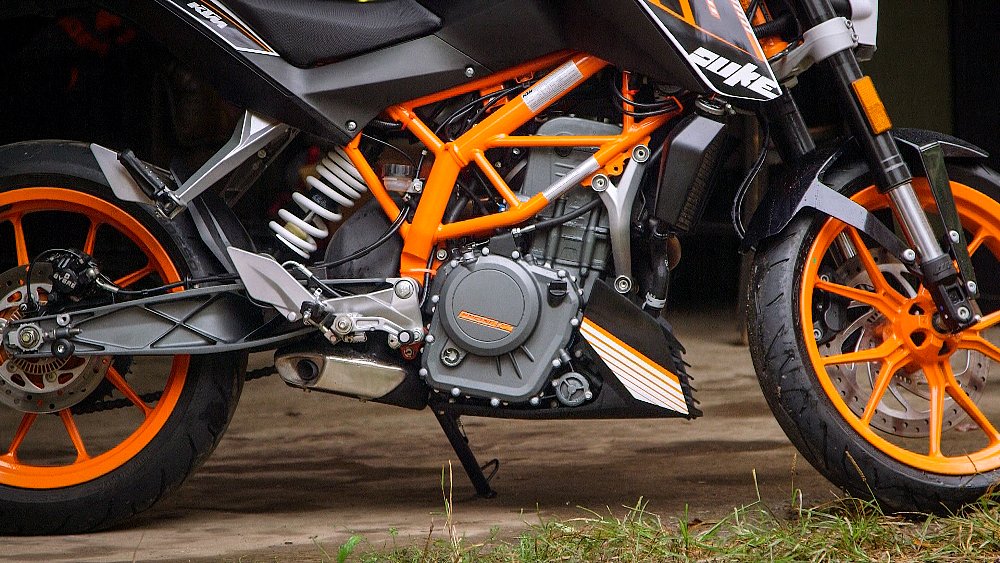
For new riders, I found the 390 Duke to be a very capable machine. The riding stance is neutral and upright, allowing for an ideal position for beginners to feel comfortable. The wide-set handlebars allow for maximized control and feedback.
The overall handling capabilities had me pushing the Duke confidently through the corners of back roads outside of the city limits, where the suspension was at home. It’s important for new riders to keep in mind that this suspension is a bit stiffer than what they might find on other 300 cc machines. So while I enjoyed the performance, it might be a bit harsh for some riders.
I have heard mixed responses about the brakes from other sources. Personally, I found the brakes on our Duke to be quite impressive in comparison to some of the other small-displacement bikes I have ridden. The ABS engaged flawlessly with minimal shuddering transmitted to the rider.

A detailing note that I feel is worth a mention is the fact that the handlebar-mounted controls are all backlit. From the horn, to the turn signals, to the headlight switch, riders can clearly see the illuminated controls. This is such a simple creature comfort yet I have never seen this before on a bike. It is especially nice for new riders who, unlike veterans, don’t have the muscle memory to locate these controls at night without thinking.

Finally, the Duke looks the part. It has the same style and stance as its big brothers, the 690 Duke and 1290 Super Duke. People constantly approached me, asking me what it was, telling me how cool it looked, and asking me how fast it would go. “Fast enough,” I would answer with a sly grin. Now, in fairness, looks are subjective and if orange isn’t your ideal color scheme, you are out of luck. Luckily for me, I think orange looks great. I mean, come on, I work at RevZilla.
KTM 390 Duke lowlights
The first thing that stood out to me on the 390 Duke, before I ever put the bike in gear, was the dash. The display feels cluttered, with too much going on. The small letters and numbers make it hard to read, especially during the day, when the backlighting is less effective. I feel this is going to be a distraction for new riders.

Shifting the bike into gear and pulling out, I found myself really having to focus on shifting the gear lever. The gearbox was especially finicky between first and second gear. I hit enough false neutrals during our shoot that Ryan, our cameraman, started cracking jokes about it being a good thing I was riding a beginner’s bike.

While I commend KTM for the brakes on the Duke, the levers are shit. They are generic and cheap with too much play to offer the rider positive feel via braking or engaging the clutch while shifting gears. I went as far as to reach out to Solid Performance, our local KTM shop in Downingtown for a fix. They recommended the KTM adjustable performance levers as an upgrade. These levers provided feel, feedback, and adjustability — everything that was lacking from the stock setup.
The most notable detraction for me was the fueling in the lower rpm range. The bike felt very lean and stumbled quite a bit. There was also a very noticeable on-off feel to the throttle. This can be very unsettling, especially for riders just starting out.
While researching ways to address this issue, I stumbled upon some debates on a forum about the ability of fuel controllers to work with KTM’s ECU. Wanting more authority on the subject, I called the folks over at Bazzaz to get their opinion. I was assured that their system will not only work with the Duke’s ECU, but also will run the whole system in “open loop,” eliminating feedback from the O2 sensor and providing better throttle response and feel across the entire rev range. Just note that this modification might not be legal in your state. Californians I am looking at you.
While the KTM provides a higher level of performance than its competition, with that performance come increased maintenance costs. The Duke has arguably the highest maintenance obligations in the class. While Kawasaki's Ninja 300 requires major services at 7,600-mile intervals, compared to KTM's 9,321-mile intervals, there are other factors to consider. The 390 Duke requires an additional valve check at the 600-mile mark and oil changes every 4,660 miles to the Kawi's 7,600 miles. Not to mention the KTM's oil change procedure is a bit more intensive than a traditional spin-on filter. This is something that should be taken into account, especially if you're not handy with a wrench and don’t have easy access to a local dealer. With that being said, let’s dig further into the KTM’s competitors.
The competition
It is a great time to learn how to ride a motorcycle. Over the past three years, we have seen the beginner class of motorcycles explode in America as manufacturers realized the need to attract a newer, younger audience to the sport. 300 cc, 500 cc, and 650 cc engines with manageable power curves have popped up in all shapes and sizes, from miniature sport bikes to mid-sized cruisers. For the purpose of this review, I am going to look at the sporty 300 cc motorcycles that provide the closest competition to the 390 Duke.

The most direct competition in terms of styling would be Honda’s CB300F. While the Honda shares a similar riding position, streetfighter style and a single-cylinder engine, that’s where the similarities end. The KTM gives you bigger power, better brakes, and a more sporting suspension. However, that performance comes at a price. With an MSRP of $3,999, the Honda is exactly a grand shy of the 390 Duke’s $4,999 price tag. If you are a new rider concerned more about price than performance, the Honda may be more your speed.
For almost the exact same amount of money as the Duke, you can pick up Yamaha’s new YZF-R3. However, money spent on the R3 will not buy you ABS brakes, and the stock, bias ply tires on the small Yamaha were junk, as we discussed in our review back in the spring. What the Yamaha does give you is a more traditional sport bike look and a bike that is low-maintenance. If you don’t like working on your bike or taking it in for service, the Yamaha is probably a better choice for you.
If you want other options that have more of that fully faired design, you are in luck. Kawasaki, the first to introduce a 300-series bike in 2013, has the Ninja 300. The ABS version comes in at $5,299 and offers smooth, even power from its parallel twin engine. However, major services come around quite quickly every 7,600 miles.
Honda responded with the CBR300R, priced at just $4,899 with ABS. Its 286 cc single-cylinder engine makes it the most approachable bike in the class from a power standpoint, pumping out a claimed 30 horsepower that comes on nice and evenly. It also will offer riders the greatest fuel economy, boasting a claimed 71 mpg. I was only able to eek out a “meager” 54 mpg on the KTM.
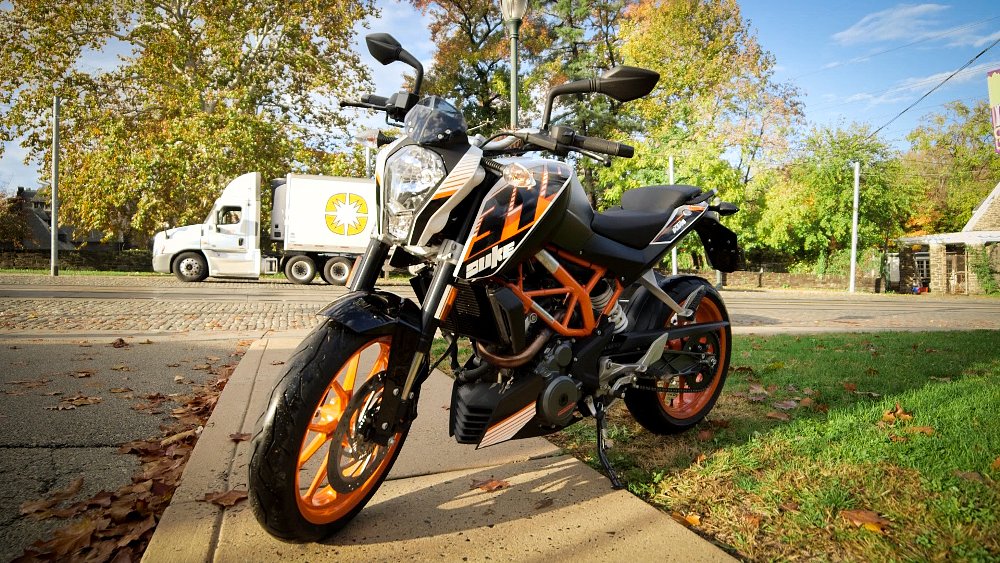
The other fully faired alternative is KTM's own RC390. The RC390 is a bit more aggressive, with a taller rear shock and steeper steering angle. It is going to be the least friendly offering in this class for new riders and demands the most money at $5,499.
In addition to those bikes you can buy today, BMW just announced its G 310 R, which is a direct competitor to the 390 Duke, but with a little more weight and a little less power. BMW says the G 310 R will be available in dealerships in the United States in the second half of 2016, but so far we don't know what it will cost.
Conclusion
In all situations, the Duke performed admirably, providing spirited performance from a package suitable for those still tackling the art of learning how to ride a motorcycle. While it could handle highway duty, I had a lot more fun with it blasting around the city.

The KTM 390 Duke is a beginner’s bike, but it’s not a bike for all beginners. It’s aimed at riders who like its wild, alternative style and loud orange paint. Riders who understand its performance and what it means for the bike. It’s for folks who are planning to keep it around for more than one season, because there is a little bit more bike to grow into.
The 390 Duke impressed me on multiple levels. It looks great and performs great, given the fact that it is a $5,000 beginner bike. It fit my six-foot, three-inch frame rather comfortably, though I look like a gentle giant riding it. It provides mild enough power to be usable for a new rider while still retaining enough reserve up top to allow for room to grow. For me, that is the mark of a solid first bike.





